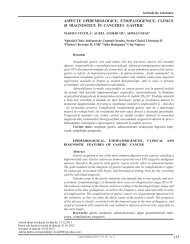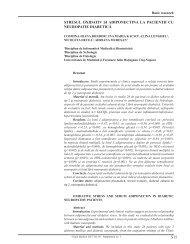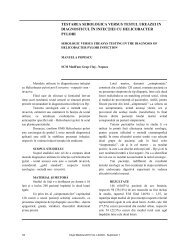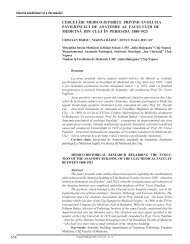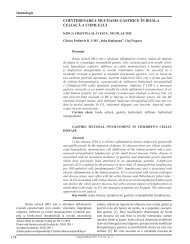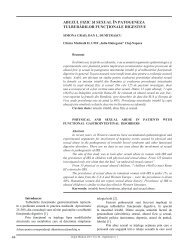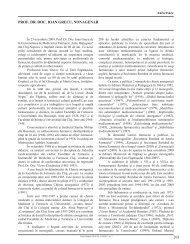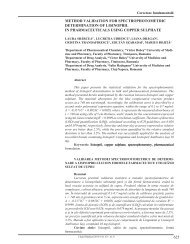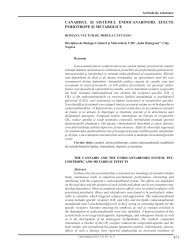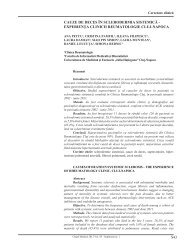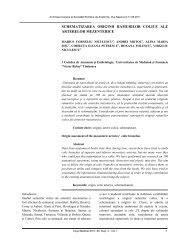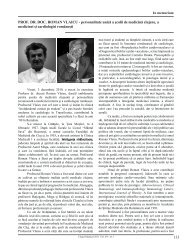You also want an ePaper? Increase the reach of your titles
YUMPU automatically turns print PDFs into web optimized ePapers that Google loves.
POLYSEROSITIS AND MULTISYSTEMIC<br />
DYSFUNCTION IN A CASE OF UNCLASSIFICABLE<br />
CONNECTIVE TISSUE DISEASE. UNDIFFERENTIATED<br />
VERSUS OVELAPPING (MIXED) SYNDROME ?<br />
(A CASE REPORT AND REVIEW OF THE LITERATURE)<br />
D. RĂDULESCU 1 , F. CIOVICESCU 1 , S. PRIPON 3 , C. DUNCEA 1 ,<br />
ELENA BUZDUGAN 1 , ANCA CRISTEA 2<br />
1Clinica <strong>Medical</strong>ă V, UMF “<strong>Iuliu</strong> Hatieganu”, Cluj-Napoca.<br />
2 Clinica <strong>Medical</strong>ă I, Laboratorul de Imunologie, Cluj-Napoca.<br />
3 student anul V , UMF “<strong>Iuliu</strong> Hatieganu”, Cluj-Napoca.<br />
Summary<br />
The existence of patients with signs, symptoms and certain laboratory test<br />
results suggestive of a systemic autoimmune disease but not fulfilling the classification<br />
criteria for well-defined connective-tissue diseases (CTDs) is a more and more common<br />
experience in clinical practice. The first description of these clinical entities dates back<br />
to 1980, when LeRoy proposed the term “Undifferentiated Connective Tissue<br />
Syndromes” (UCTS) to define the early stages of connective-tissue diseases that are<br />
undefined, unclassifiable or perhaps incomplete, as opposed to mixed or overlapping<br />
syndromes in which patients exhibit enough features of more than one connective tissue<br />
disease to meet the diagnosis for several at the same time.<br />
In this article we present the case of a 53 year old female admitted to <strong>Medical</strong>a<br />
V Hospital with a diagnosis of undifferentiated connective tissue disease, documented<br />
on clinical and laboratory data.<br />
Key words: undifferentiated connective tissue disease, connective tissue<br />
disease<br />
Introduction<br />
The existence of patients with signs, symptoms and certain lab test results<br />
suggestive of a systemic autoimmune disease but not fulfilling the classification criteria<br />
for well-defined connective-tissue diseases (CTDs) is a more and more common<br />
experience in clinical practice. The first description on these clinical entities dates back<br />
to 1980, when LeRoy proposed the term “Undifferentiated Connective Tissue<br />
Syndromes” (UCTS) to define the early stages of connective-tissue diseases that are<br />
undefined, unclassifiable or perhaps incomplete, as opposed to mixed or overlapping<br />
syndromes in which patients exhibit enough features of more than one connective tissue<br />
disease to meet the diagnosis for several at the same time. Thus, they “overlap” two or<br />
more diseases. That’s because many CTDs share common signs and symptoms which<br />
frequently makes the diagnosis difficult. The definition of UCTS and overlap<br />
syndromes is still under debate.<br />
137



